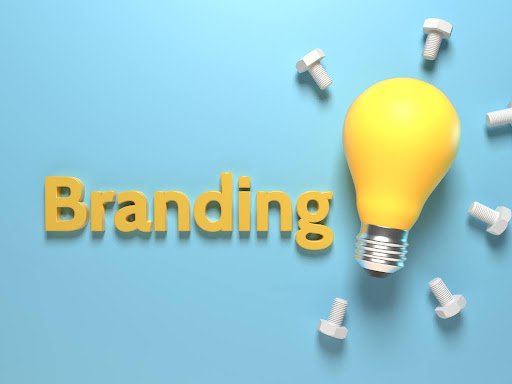In today’s fast-paced world, personal branding has become essential for professionals, entrepreneurs, and even students. Your brand represents who you are, what you stand for, and how others perceive you. With the competitive nature of industries, standing out is crucial. Here’s where Design Thinking for Personal Branding comes into play. This human-centered approach helps individuals build, refine, and communicate their brands effectively.
Common Challenges in Building a Personal Brand
People like founders and freelancers inevitably end up trying to build a personal brand. There are several challenges that such people encounter. Here’s a list of some of the standard ones:
1. Balancing Authenticity and Strategy
Being authentic is important, but it can sometimes clash with strategic branding. You may feel the pressure to present yourself in a way that doesn’t align with who you are.
Solution: Stay true to your core values, and ensure your brand messaging is aligned with your authentic self.
2. Staying Consistent Across Platforms
Maintaining consistency in your brand across various platforms (social media, website, etc.) can be tough.
Solution: Develop a brand guideline that includes your visual identity, tone of voice, and core message to maintain consistency.
3. Evolving Your Brand Over Time
As your career or personal goals change, your brand needs to evolve, but it can be hard to know how to shift your messaging.
Solution: Learn to adapt and refine your brand as you grow, making small changes that align with your new goals.
- Building Brand Recall
A personal brand needs to be memorable. Creating that lasting impression can be difficult in a crowded market.
Solution: Utilize repetition in key messaging, visual cues, and distinctive elements such as a unique logo or tagline. Regularly engage with your audience through meaningful content to reinforce your brand identity, making it easier for people to remember and recognize you over time.
Overcoming Personal Branding Challenges – Enter Design Thinking
Design Thinking for Personal Branding is about applying the principles of design thinking to develop and communicate a strong personal brand. It emphasizes empathy, creativity, experimentation, and iteration to craft a personal brand that resonates with your audience and stays true to who you are.
By adopting design thinking, you can:
- Understand your audience and what they value.
- Create a personal brand that aligns with your core values.
- Experiment and iterate on your brand messaging.
- Solve branding challenges with creative solutions.
This approach ensures that your brand grows organically and is adaptable to the changing demands of your industry or career.
The Stages of Design Thinking for Personal Branding
 Design thinking follows five core stages. Let’s break these down in the context of Design Thinking for Personal Branding.
Design thinking follows five core stages. Let’s break these down in the context of Design Thinking for Personal Branding.
1. Empathize: Understand Your Audience
The first step in design thinking is empathy. To develop a personal brand, you must first understand who your audience is. Are you targeting professionals, clients, or a general public?
Questions to ask yourself:
- Who is my ideal audience?
- What do they care about?
- What problems or challenges are they facing?
Understanding your audience will help you tailor your message to connect with them emotionally. Remember, a personal brand is not just about you; it’s about how others perceive you.
2. Define: Clarify Your Unique Value Proposition
Once you understand your audience, the next step is defining your personal brand’s unique value. This is the core of your brand and what sets you apart.
To clarify your value proposition, think about:
- What are my strengths?
- What skills or experiences do I bring to the table?
- What values do I want to highlight in my brand?
This stage is about defining your key message and what makes you stand out from the competition. Your unique value proposition should be clear, concise, and aligned with your audience’s needs.
3. Ideate: Brainstorm Brand Ideas
With a clear understanding of your audience and your unique value proposition, it’s time to get creative. Ideation in Design Thinking for Personal Branding means brainstorming different ways to communicate your brand.
Some ideas to consider:
- How will you present yourself online (LinkedIn, social media, website)?
- What type of content will you create (blogs, videos, interviews)?
- How can you differentiate yourself visually (logo, color scheme, images)?
This is a chance to explore various branding strategies and decide what best represents you.
4. Prototype: Build Your Brand
Once you have brainstormed ideas, it’s time to build prototypes. In the context of personal branding, this could mean:
- Creating a personal website or portfolio.
- Developing a logo or visual identity.
- Drafting a bio or tagline that reflects your values.
At this stage, it’s important to test different approaches and see what resonates best with your audience. Don’t be afraid to experiment with different mediums and styles.
5. Test: Gather Feedback and Refine
Testing in Design Thinking for Personal Branding is all about gathering feedback from your audience. Share your brand with colleagues, mentors, or even on social media to get insights into how others perceive you.
Key points to focus on during the testing phase:
- Is my brand message clear?
- Does my brand resonate with my target audience?
- How can I refine my message to make a stronger impact?
Testing helps you improve your brand, making it more effective over time.
Benefits of Using Design Thinking for Personal Branding
Adopting Design Thinking for Personal Branding has several benefits, such as:
- Empathy-driven approach: Your brand will be more authentic and tailored to your audience.
- Creativity: Design thinking encourages out-of-the-box solutions, helping you stand out.
- Adaptability: By focusing on testing and iteration, your brand remains flexible and can evolve with changing trends or career paths.
- Problem-solving: If you face challenges in your brand development, design thinking provides a framework to overcome them creatively.

Real-Life Examples of Design Thinking for Personal Branding
1. Elon Musk: Aligning Brand with Vision
Elon Musk’s brand is closely tied to innovation, technology, and the future. Musk uses platforms like Twitter to communicate directly with his audience, aligning his brand with his vision for space exploration and electric vehicles. He tests new ideas, gathers feedback, and continuously refines his public persona.
2. Oprah Winfrey: Authenticity and Empathy
Oprah’s brand focuses on empathy, self-improvement, and empowerment. She uses storytelling and human-centered approaches to connect with her audience, building trust and authenticity. By understanding her audience deeply, she has built a brand that resonates on an emotional level.
- Virat Kohli: Passion and Consistency
Virat Kohli, one of India’s most celebrated cricketers, has built a personal brand around his passion for the game, fitness, and consistency. Through social media, he shares not only his professional achievements but also his fitness journey, emphasizing dedication and discipline. By leveraging Design Thinking, Kohli deeply understands his audience’s expectations—aspiring athletes and cricket enthusiasts—and consistently delivers a message of excellence, adaptability, and resilience. His association with brands like Puma and Wrogn also reinforces his energetic, youthful brand identity.
Tips for Successful Personal Branding with Design Thinking
Here are some tips to successfully implement Design Thinking for Personal Branding:
- Embrace feedback: Don’t be afraid to gather feedback from others, and use it to iterate on your brand.
- Stay adaptable: Your brand should grow and change with you. Be open to evolving.
- Focus on authenticity: Authenticity builds trust. Stay true to your values and communicate them.
- Be creative: Experiment with new ideas, formats, and strategies to stand out from the crowd.
Conclusion: Why Design Thinking for Personal Branding Matters
Personal branding is no longer just about self-promotion; it’s about creating a meaningful connection with your audience. By using Design Thinking for Personal Branding, you can develop a brand that is empathetic, creative, and adaptable to change. This process helps you to stay aligned with your values while continuously improving your public image.
Ultimately, Design Thinking for Personal Branding allows you to think outside the box, solve problems creatively, and build a brand that resonates with people on a deeper level. So, start building your brand today by applying design thinking principles, and watch as your brand evolves and grows over time.
Remember, personal branding is not a one-time task. It’s an ongoing process of refining your message, testing new ideas, and aligning with your audience’s needs. Design Thinking for Personal Branding provides a structured yet flexible approach to help you navigate this journey.
Whether you’re just starting or looking to redefine your brand, embracing design thinking will enable you to make a lasting impact, foster authentic connections, and build a brand that truly reflects who you are.
About the author
Anuradha is a passionate Design Thinking practitioner with 10+ years of industry experience. She has dived into the field of Design and Design Thinking, where she is trained to design experiences. She is the Founding Partner and Design lead at Humane Design and Innovation (HDI) Consulting. Her professional career spans various roles in Advisory, UX Design, Service Design, Engineering Design, Design integration, and Training. She was the lead designer of the Design Thinking and Innovation practice at KPMG. She has designed multiple digital experiences by conducting strategic UX workshops and design experiences that add functional and emotional value. To her friends & peers, she is the Bonding Agent of the team and always a go-to person. She is an avid reader, blogger & painting enthusiast.
We at Humane Design strongly believe in the human ethos and draw inspiration from humans and other elements of nature to design innovative solutions for organizations of all sizes. We will be glad to be your success partner. Email us your requirements at explore@humaned.in.Connect with Us!



